Which Microscope Can See Atoms ?
The scanning tunneling microscope (STM) and the atomic force microscope (AFM) are two types of microscopes that can see atoms.
1、 Scanning Tunneling Microscope (STM)
The microscope that can see atoms is the Scanning Tunneling Microscope (STM). This groundbreaking instrument was invented in 1981 by Gerd Binnig and Heinrich Rohrer, who were awarded the Nobel Prize in Physics in 1986 for their discovery. The STM allows scientists to visualize individual atoms and manipulate them at the atomic level.
The STM works by scanning a sharp metal tip across the surface of a sample. A small voltage is applied between the tip and the sample, creating a tunneling current. This current is extremely sensitive to the distance between the tip and the sample, allowing the STM to measure the topography of the surface with atomic resolution.
With the STM, scientists can not only observe individual atoms but also study their electronic properties. By adjusting the voltage, they can map the distribution of electrons on the surface, providing valuable insights into the behavior of materials at the atomic scale.
In recent years, there have been advancements in STM technology that have further enhanced its capabilities. For example, researchers have developed variants of the STM that can operate at extremely low temperatures or in ultra-high vacuum conditions, allowing for more precise measurements and imaging of atoms.
Additionally, there have been efforts to combine the STM with other techniques, such as spectroscopy, to gain a deeper understanding of the properties of materials. These advancements have opened up new avenues for studying and manipulating atoms, paving the way for advancements in nanotechnology, materials science, and other fields.
In conclusion, the Scanning Tunneling Microscope (STM) is the microscope that can see atoms. Its invention revolutionized the field of nanoscience and has allowed scientists to explore the atomic world in unprecedented detail. Ongoing advancements in STM technology continue to push the boundaries of what we can observe and understand at the atomic scale.

2、 Atomic Force Microscope (AFM)
The microscope that can see atoms is the Atomic Force Microscope (AFM). The AFM is a powerful tool used in nanotechnology and materials science to observe and manipulate matter at the atomic level. It was first developed in the 1980s and has since become an essential instrument in various scientific fields.
The AFM works by using a tiny probe, typically a sharp tip at the end of a cantilever, to scan the surface of a sample. As the probe moves across the surface, it interacts with the atoms and measures the forces between them. These forces are then used to create a detailed image of the sample's surface, revealing the positions of individual atoms.
One of the key advantages of the AFM is its ability to provide three-dimensional images with atomic resolution. This allows scientists to study the surface topography of materials at an unprecedented level of detail. Additionally, the AFM can also be used to measure other properties of the sample, such as electrical conductivity and magnetic fields, making it a versatile tool for characterizing a wide range of materials.
In recent years, advancements in AFM technology have further expanded its capabilities. For example, high-speed AFM techniques have been developed, enabling real-time imaging of dynamic processes at the atomic scale. Additionally, AFM-based methods such as atomic manipulation and nanolithography have been developed, allowing scientists to not only observe atoms but also manipulate and engineer them.
Overall, the Atomic Force Microscope is a groundbreaking instrument that has revolutionized our understanding of the atomic world. Its ability to see and interact with individual atoms has opened up new possibilities for scientific research and technological advancements.

3、 Transmission Electron Microscope (TEM)
The microscope that can see atoms is the Transmission Electron Microscope (TEM). This powerful instrument uses a beam of electrons instead of light to magnify and visualize samples at the atomic level. The TEM has revolutionized our understanding of the microscopic world and has become an essential tool in various scientific fields.
The TEM works by passing a beam of electrons through a thin sample, which interacts with the atoms in the sample and scatters the electrons. These scattered electrons are then collected and used to create an image of the sample. The high energy of the electron beam allows for a much higher resolution than traditional light microscopes, enabling scientists to observe individual atoms.
With the TEM, scientists can study the structure and composition of materials at an atomic scale. This has led to significant advancements in fields such as materials science, nanotechnology, and biology. Researchers can analyze the arrangement of atoms in a crystal lattice, observe the behavior of nanoparticles, and even study biological samples at the molecular level.
In recent years, there have been advancements in TEM technology that have further enhanced its capabilities. For example, aberration-corrected TEMs have significantly improved the resolution and image quality, allowing for even more precise atomic imaging. Additionally, in-situ TEM techniques have been developed, enabling scientists to observe dynamic processes in real-time, such as the growth of nanomaterials or the behavior of biological molecules.
In conclusion, the Transmission Electron Microscope (TEM) is the microscope that can see atoms. Its ability to visualize samples at the atomic level has revolutionized scientific research and has led to numerous discoveries and advancements in various fields. With ongoing technological advancements, the TEM continues to push the boundaries of our understanding of the microscopic world.

4、 Scanning Electron Microscope (SEM)
The microscope that can see atoms is the Scanning Electron Microscope (SEM). SEMs are powerful tools that use a focused beam of electrons to scan the surface of a sample and create detailed images at a very high resolution. Unlike optical microscopes, which use light waves to magnify objects, SEMs use electrons, which have much shorter wavelengths, allowing for much higher magnification and resolution.
SEM technology has advanced significantly over the years, and the latest models are capable of achieving atomic resolution. With the development of advanced detectors and improved electron optics, SEMs can now visualize individual atoms and provide detailed information about their arrangement and composition.
One of the key features of SEMs is their ability to generate three-dimensional images. By scanning the electron beam across the sample and detecting the emitted electrons, SEMs can create detailed topographical maps of the surface, revealing the shape and structure of the atoms. This capability is particularly useful in materials science, nanotechnology, and biological research, where understanding the surface morphology and composition at the atomic level is crucial.
In addition to imaging, SEMs can also be used for various analytical techniques, such as energy-dispersive X-ray spectroscopy (EDS) and electron backscatter diffraction (EBSD). These techniques allow researchers to analyze the elemental composition and crystallographic information of the sample, providing valuable insights into its properties and behavior.
Overall, the Scanning Electron Microscope is the microscope that can see atoms, and with the latest advancements in technology, it continues to be an indispensable tool for scientific research and discovery.















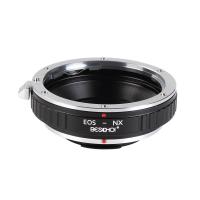




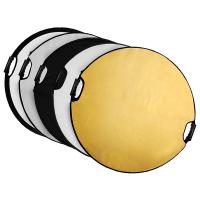


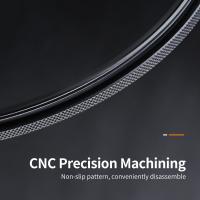


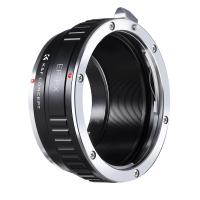


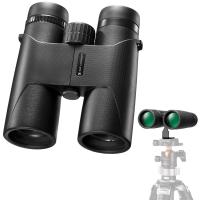
There are no comments for this blog.